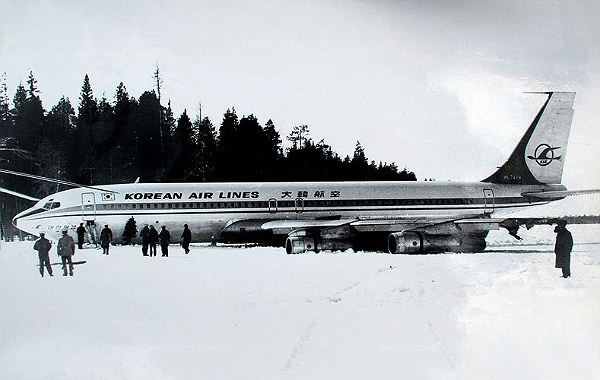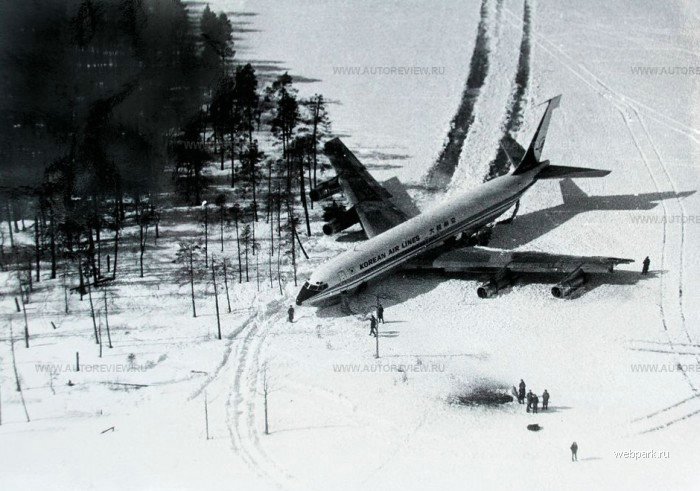Just like the Korean Air Lines 007 incident, the primary perception is that the Russian shot down a civil airliner.
— James Albright

Updated:
2013-07-03
And just like in that case, none of it would have happened had the airliner crew followed basic navigation procedure.
Note: I don't have any primary source information about this accident.

1
Accident report
- Date: 20 APR 1978
- Time: 22:17
- Type: Boeing 707-321B
- Operator: Korean Air Lines - KAL
- Registration: HL7429
- Crew: Fatalities: 0 / Occupants: 12
- Passengers: Fatalities: 2 / Occupants: 97
- Total: Fatalities: 2 / Occupants: 109
- Airplane fate: Written off (damaged beyond repair)
- Location: Korpijärvi Lake (Russia)
- Phase: En route (ENR)
- Nature: International Scheduled Passenger
- Departure airport: Paris-Charles de Gaulle Airport (CDG/LFPG), France
- Destination airport: Anchorage International Airport, AK (ANC/PANC), United States of America
2
Narrative
Flight 902 departed Paris for a flight to Seoul with an intermediate stop at Anchorage, AK. The aircraft passed the Canadian Station "Alert", located 400 miles from the North Pole where the crew corrected their course. However this brought them on a course directly across the Barents Sea towards Soviet airspace. The plane was initially recognized by Soviet anti-aircraft defense radars as a Boeing 747. Sukhoi Su-15TM interceptor jets were sent to intercept the intruder. When both Sukhoi jets were flying next to the Korean airliner, the captain said he slowed down plane and switched on landing lights. Nevertheless the Su-15 crews were ordered to shoot down the plane. According to the U.S. the Su-15 pilot for several minutes tried to convince his superiors to cancel the attack, because the aircraft was a civilian Boeing 707 instead of a reconnaissance Boeing RC-135. After an additional order two P-60 rockets were launched. One of them missed the 707 but the other rocket exploded, severely damaging part of the left wing. Shrapnel punctured the fuselage, causing a rapid decompression and killing two passengers. The Korean pilot initiated an emergency descent from FL 350 to 5000 feet and entered clouds. Both Sukhoi jets lost the 707 in the clouds. The aircraft continued at low altitude, crossing the Kola Peninsula and looking for a place to land. After several unsuccessful attempts in the evening dusk landed on the ice of Korpijärvi lake. All occupants were rescued by Russian helicopters.
4
Cause
The aircraft was not equipped with inertial navigation and it is speculated that nearly 500 nm form the North Pole the crew miscalculated the magnetic variation and ended up flying a very large right turning arc, right into Russian airspace. The Russians dispatched an interceptor aircraft. Its pilot mistakenly identified the aircraft as an U.S. spy plane, and RC-135. He later corrected himself but his superiors gave him the order to shoot. He fired two missiles, one of which hit a wing tip. Shrapnel caused a decompression and the Korean airliner descended. The interceptors lost the airliner in a cloud. The airliner looked in vain for a place to land and ended up landing on a frozen lake bed.
The Soviets eventually released the passengers and crew, after the crew admitted wrong doing and the South Korean government paid for catering expenses.
References
(Source material)
Pravda, Ukraiyinska, How USSR Downed over Kareila the Korean Boeing, Spring of 1978

